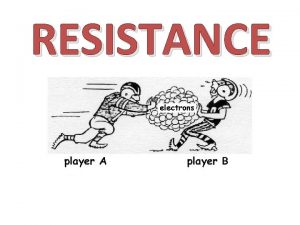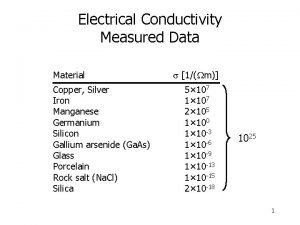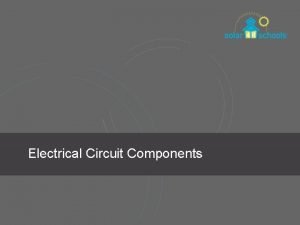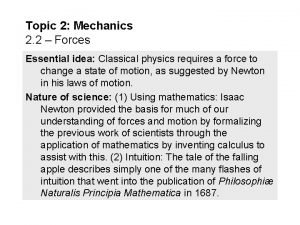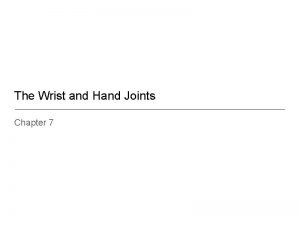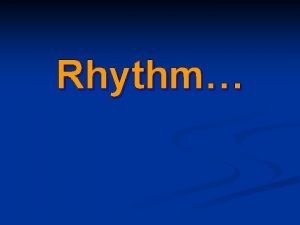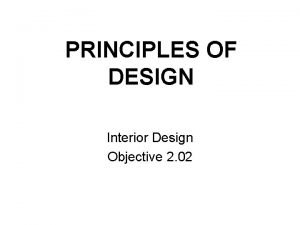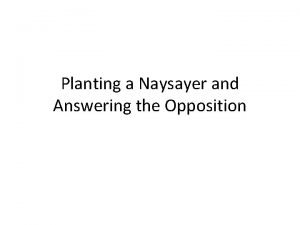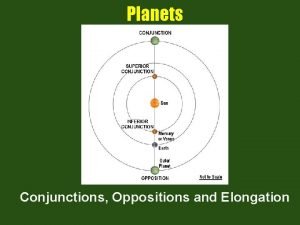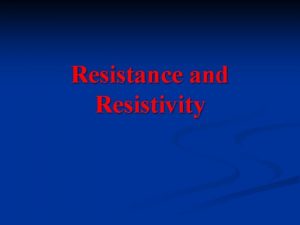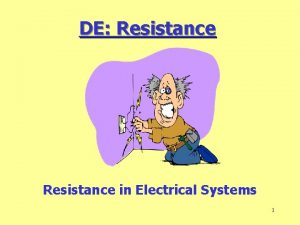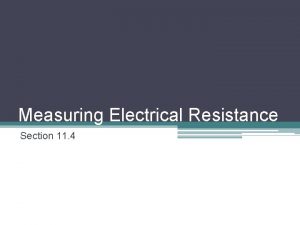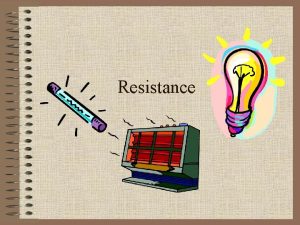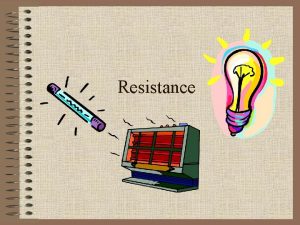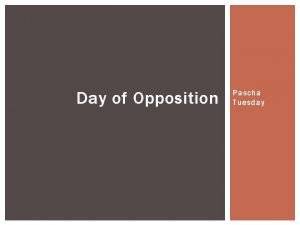Electrical Resistance Resistance R opposition to the flow

















- Slides: 17

Electrical Resistance

Resistance (R) - opposition to the flow of charge, resulting in a loss of potential energy. Circuit Diagram

Resistance and Resistors Some clarifications: • • Resistance is a property of a material or device. Current and charge do not get used up. Whatever charge goes in one end of a circuit comes out the other end. © 2014 Pearson Education, Inc.

Resistivity The resistance of a wire is directly proportional to its length and inversely (18 -3) proportional to its cross-sectional area: The constant ρ, the resistivity, is characteristic of the material.

18 -4 Resistivity

Resistivity For any given material, the resistivity (18 -4) increases with temperature: Semiconductors are complex materials, and may have resistivities that decrease with temperature.

Resistance Ohm’s Law Units: volt (V) amp (A) ohm (W)

Ohm’s Law and Resistance n Graphically – plot V vs I V Slope = R I

Ohm’s Law Sample Problem n Calculate the potential difference across a 150 resistor if the current that passes is 0. 27 A. (Ans: 41 V)

((12. 7) Electrical Power

Power n n The rate at which a device uses energy is the power. The faster a device uses energy, the more powerful it is.

Electrical Power is the rate of doing work. Units:

Electrical Power in a Circuit There are several equivalent expressions for power: Unit: Watts (W)

Sample Problem 0. 75Ω 1) A light bulb with a resistance of 0. 75Ω is connected to a 1. 5 V. a) Calculate the power used by the light bulb. (Ans: 3. 0 W) b) How much current passes through it? (Ans: 2. 0 A)

Cost of Electricity n n Electric companies charge for the number of kilowatt-hours (k. Wh) used. One kilowatt-hour (k. Wh) means that a kilowatt of power has been used for one hour. k. Wh is a unit of energy. 1 k. Wh = 3. 6 x 106 J

Cost of Electricity Sample Problem 2) Your electric company charges 14 ¢/k. Wh. A coffee maker has a power rating of 1 050 W. How much does it cost to use the coffee maker one hour per day for 30 days? (Ans: $4. 41)

Port Colborne – Electricity Prices Demand Time-of-Use Periods Price On-Peak “Time-of-Use (TOU) Prices” Mid-Peak Winter Season Nov to Apr 20. 80 ¢/k. Wh Weekdays: 7 a. m. to 11 a. m. 5 p. m. to 7 p. m. 14. 4 ¢/k. Wh Weekdays: 11 a. m. to 5 p. m. Off-Peak 10. 1 ¢/k. Wh Weekdays: 7 p. m. to 7 a. m. Weekends & Holidays: All Day
 What is a force that opposes motion through direct contact
What is a force that opposes motion through direct contact Resistance is the opposition to
Resistance is the opposition to What is electrical resistance
What is electrical resistance Electrical resistance formula
Electrical resistance formula Cake resistance formula
Cake resistance formula Resistance opposes
Resistance opposes Waiting for godot analysis
Waiting for godot analysis The opposition of forces, essential to the plot is called
The opposition of forces, essential to the plot is called Finger opposition
Finger opposition Rhythm refers to
Rhythm refers to Structuralist
Structuralist Binary opposition example
Binary opposition example Reversives
Reversives Principles of design radiation
Principles of design radiation Principles of design radiation
Principles of design radiation Examples of naysayers
Examples of naysayers Conjunctions of opposition
Conjunctions of opposition Gradual increase of a color size or pattern
Gradual increase of a color size or pattern


